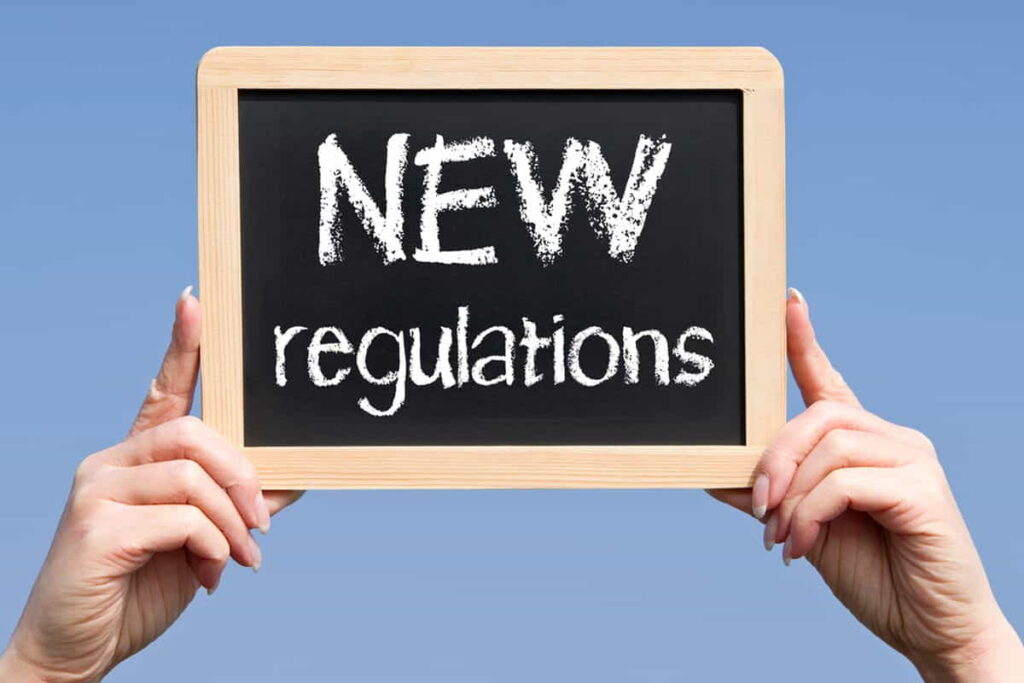Avoiding claim rejections in
health insurance

Claim rejections can be quite stressful and disappointing, while deciding to invest in health insurance, the primary things that we consider are premiums, eligibility and tax benefit. Many of us often overlook the policies limitations, exclusions. This is one of the primary reasons for claim rejections which leave the policyholder with a bitter experience. Often, upon claim rejections, individuals conclude that availing of health insurance could be futile. However, this is an incorrect observation, there is a need to read and understand the fine print.
Top reasons for claim rejections
- Illness for which the claim is raised is not covered:
Certain exclusions are mentioned in the policy. If the policyholder were to claim medical treatment availed for one such illness then such a claim would not be honoured. It is important to claim against those illnesses which are duly covered under the health policy.
Some of the popular exclusions are unnecessary medical procedures, elective surgeries, generic medicine for overall wellbeing that doesn’t pertain to any specific disease etc., If there are specific requirements that are not being covered under your policy, then the applicant can look at the riders to ascertain if availing one of those can help in achieving comprehensive cover.
- Incomplete documentation:
This is one of the leading causes for claim rejections, for every instance of the health insurance claim, there is a need to fill the claim application. Every aspect today is digitised, one has to fill out the online application and make a submission, the status will be visible online.
Individuals often do not provide accurate and complete information for claims to be seamlessly accepted and honoured. It is best to contact the insurance office to ascertain if the application has been filled correctly. By filling the application accurately, one is sure of receiving the claim immediately without any delays.
Also, documentation is very important for the settlement of claims. If the necessary documents are not provided, in ORIGINAL, the claim might be rejected. Here is a quick checklist of the MUST-HAVE documents for any health insurance claim, both for cashless and reimbursement:- Doctor’s advice for hospitalisation, especially for planned treatment. For emergency hospitalisation, the RMO’s advice would suffice.
- ALL original bills and receipts of all payments done.
- ALL original reports for diagnostic and recovery tests such as MRI, CT Scan, X-ray, urine and blood tests, ECG, etc.
- Proper documentation of treatment and any other document pertaining to the treatment.
- Discharge summary of the hospitalisation with the course of action and follow up treatment for recovery.
- For accidental claims, either an FIR or an MLC (Medico-Legal Certificate) is needed.
- KYC documents of the policyholder and the insured.
- Duly and signed claim form. For cashless claims, a pre-authorization form would be required to be submitted along with the admission form at the time of admission.
- For reimbursement claims, the bank account details with a cancelled cheque are needed for NEFT transfers.
- Policy document and health card, especially at the time of admission for cashless claims.
- Upon due diligence, medical treatment was found to be unnecessary:
It is always better to embark on the line of treatment only after checking with your insurer if it qualifies for a settlement. This is especially necessary if you cannot afford to do an out-of-pocket expense. These days most of the companies offer the cashless facility, hence the due diligence of the line of treatment and whether it falls within the exclusions will be informed upfront.
In the case of reimbursement, the policyholder has to pay the hospital and then document all the expenses and claim from the insurer. In such an event, claim rejections could be upsetting since you would not be able to replenish the financial dent that the expense could have caused.
Note: For example, hospitalisation only for diagnostic purposes without any proper line of treatment would not be covered under any health insurance and hence would be rejected.
- The claim was not filed within the time period mentioned in the health insurance policy:
There are specifications regarding the window within which a claim has to be made since the medical treatment was availed or hospitalisation was undergone. If the policyholder fails to file for claims within the said window, the claims could be rejected.
In our busy schedule, we often miss some of the most important aspects, this is one such aspect. The claims beyond the permitted window may be allowed only in genuine cases. This is one of the many reasons why claims get rejected. In some cases, the policyholder is genuinely unaware of the existence of such a window.
In other scenarios, the lapse could be due to a lack of attention to detail. In the case of hospitalisation, the insurer has to be informed within a period of 24 to 48 hours of admission to the hospital.
- Medical treatment at a centre not within the network hospital list or in a blacklisted hospital:
Every health insurance company has a set of network hospitals that are to be used to avail the line of treatment or any medical procedure for availing cashless claims. These are hospitals with which they have a tie-up and can seamlessly do the settlements and check upon status. Many individuals undertake medical treatment in other hospitals outside the list of network hospitals, this could lead to rejection. It is important to check the clause in the health insurance policy regarding the allowance of treatment at hospitals outside the network.
Some of the health insurance policies may outright reject such a claim, while others may only honour them partially. Both these circumstances are disappointing and not conducive for individuals.
Note: However, please understand, if a claim has been rejected for a “cashless” claim, it can still be filed for reimbursement, provided the hospital is not “blacklisted” by the insurer. Treatment done in blacklisted hospitals are not payable even on reimbursements.
- Claims against lapsed policy:
It is important to renew your policy in time before it lapses. There are usually multiple reminders that are sent to your registered mobile number, despite this many people tend to miss the date and end up renewing it after a week or month post lapse.
In this period, there could be a situation where they have fallen sick and any claim made for this period of a gap between the lapse and renewal of the policy will be outright rejected. This is the case even if hospitalisation has occurred even a single day after the lapse of the policy, there will be no exceptions in this case. It is a very unfortunate situation to be in, hence it is important to renew your policy annually before the deadline.
Here are some tips on avoiding claim rejections:
- Read the policy document upon issuance of policy:
How often do we read the terms and conditions in any document? We have seen T&C popup on our window during browsing often, we mechanically click the “Agree” button without actually spending time to understand the nuances. In such a process, we give a set of rights to the counterparty and simultaneously assume certain obligations.
By not reading through the T&C, we blissfully remain unaware of these aspects. A similar approach could be potentially dangerous to follow in the case of health insurance plans, one should always be aware of any financial commitment made.
Health insurance is a product that helps us hedge our health risk, we must go through the aspects thoroughly to ensure that we are aware of the benefits, inclusions and exclusions. In fact, before availing of the plan, you should ideally do a comparison of products to ascertain the product which aligns well with your requirements. A thorough evaluation of the features, benefits, exclusions, inclusions, premiums etc. should be made and the right one that suits you should be chosen.
However, if you have missed doing this and signed up with a health insurer on an ad-hoc basis, then it is suggested that you go through the policy document upon issuance. Every insurance policy has a 15-day free look-in period, which allows the insurer to cancel the policy without incurrence of any cost within this period.
One can avail of this option if you feel that the policy does not align with your requirement. This is one of the most critical steps to ensure that there are no claim rejections in the future.
- Fill the application with optimal care:
The application form of insurance is a very intricate document. What you specify there will hold good during the tenure of the policy, any misinformation could lead to severe problems later on. It can be one of the key reasons for claim rejection. Often, if the application is not filled appropriately or with incorrect information, the underwriting team may reject such application and render the applicant unfit to avail of the health insurance plan.
It is always best to seek the assistance of the agent from the insurer’s office to fill out the form accurately. Even a simple mistake like wrong spelling could lead to rejection of the claim or termination of the policy. Today, the entire process has become digitised, the application can be filled online, the help can also be bought online. You can request a call back from an agent who can help you not only understand the product in detail but also help you in filling out the application accurately.
The documents can also be submitted online with necessary attestations and a digital signature would suffice in many instances. The premium of course could be paid via digitised means. There may be a few instances of medical checkups required.
However, in many cases, if the underwriting team in the insurance company evaluates that the risks are well within reasonable limits, a medical checkup may not be required. Such medical checkups can be conducted at the convenience of the applicant in one of the network hospitals.
- Ensure that all information is accurate:
The coverage for an individual is provided based on the information in your application form. The coverage amount is dependent on income details, age and other factors. You must provide accurate and complete information, mentioning information that is tentative or incomplete will be devastating in the future.
There are times, when individuals do not put forth their existing health condition accurately, in this case, if the insurer finds out that there has been misinformation, will terminate the policy. This will leave you with no cover and the premiums paid will become useless.
Just like one advises not to hide any information from your doctor, you mustn’t hide any information from your health insurer.
If you are sceptical about certain aspects, for example, if you have been a smoker in the past and have quit only recently; then also you may have to specify the same. Further, if you have recently picked up the habit of smoking post-issuance of a health policy, then it is best to be transparent with your insurer and update the information. This will lead to revised risk assessment and an increase in premium or reduction in sum assured.
It is always better that you disclose the information from your end, rather than the insurer finding it upon due diligence or investigations. This could lead to claim rejection and in some cases termination of the policy if the insurer feels that there is a “non-disclosure or misrepresentation of material facts”.
- Look for comprehensive coverage instead of low premiums alone:
Many individuals while buying health insurance tend to look only at a premium. Despite the comparison, the focus remains on the policy which offers the lowest premiums. Many insurance companies also promote or advertise low premiums and try to capture market share. These are basic plans which have a lot of exclusions. Individuals are lured by the low premium phenomenon and fail to evaluate whether the plan aligns with their requirements.
It is important to ensure that the plan you commit to has coverage for your requirements. If you have availed of a plan which offers only basic coverage, there is a possibility of claim rejection.
- Get medical treatment in one of the network hospitals as specified in the policy document:
As stated earlier, many of the non-elective, emergency lines of treatment are undertaken at the most accessible hospital at the rate that was quoted. This could be a cardinal mistake, many health insurance policies do not entertain claims outside the network hospitals, others may offer only partial coverage. This is an aspect one should evaluate right at the time of signing up for the policy.
The network hospitals should be reputed and accessible from your place of residence. Even if your insurer allows for claims outside the network hospital, it would be a tough proposition to get the documentation etc.
The insurer generally does the settlement directly with the network hospital seamlessly, due to the existing arrangement. Undergoing treatment with a non-network hospital complicates the settlement process for the insurer.
- Submission of documents and bills for reimbursement:
While most of the health insurance policies offer a cashless settlement, there may be instances when you will have to claim reimbursement of expenses that you have already incurred as part of your treatment.
The required documents will be mentioned as part of the policy document, most such claims would require submission of hospitalisation, surgery, medicine expense bills, doctor’s prescriptions and any other document relevant for the establishment of the genuineness of the claim.
Note: It is also advisable to have copies of the documents submitted, the submission has to be made within the stipulated time to ensure that a quick claim settlement can be achieved. The copies have to be filed and kept safely for future reference at your end.
How to deal with health insurance rejections?
When the claim is rejected, while you may feel dejected and upset, you will have to pull yourself together and get on with an action plan to appeal. Look for loopholes or errors in the documents and forms submitted by you. If you are unable to identify the means to correct the claim documents, you can avail the support of a third-party representative (TPA) or the helpline of the insurer with appropriate documents. Alternately you could also approach the Ombudsman before proceeding legally.
Wrap it up:
While availing of health insurance is a smart decision, not reading and understanding the details of the policy can be a cardinal mistake. This could lead to unfortunate events like claim rejection which could not only cause mental distress but also a financial one.
Frequently Asked Questions
- What are the common reasons for claim rejection?Common reasons for claim rejection are:
- Illness for which the claim is raised is not covered
- The claim application form was not filled out appropriately
- Upon due diligence, medical treatment was found to be unnecessary
- The claim was not filed within the time period mentioned in the health insurance policy
- Medical treatment at a centre not within the network hospital list
- Claims against a lapsed policy.
- How can you avoid claim rejection?
- Some tips to avoid claim rejection:
- Read the policy document upon issuance of the policy
- Fill the application with optimal care
- Ensure that all information is accurate
- Look for comprehensive coverage instead of low premiums alone
- Get medical treatment in one of the network hospitals
- Submission of documents and bills for reimbursement.
- What should you do if your claim is rejected?
- Look for loopholes or errors in the documents and forms submitted by you. If you are unable to identify the means to correct the claim documents, you can avail the support of a third-party representative (TPA) or the insurance company with appropriate documents.
- Conclusion
Secure is designed to provide you and your family with comprehensive, accessible, and affordable healthcare solutions. Whether you’re an individual, a family, or a senior citizen, there’s a plan designed to provide financial security and peace of mind.
Some key reasons why you should choose CarePal Secure are:
Extensive Coverage: Get access to a wide network of hospitals for cashless treatments, covering everything from regular health check-ups to major hospitalisations.
No Waiting Period for Essential Coverage: CarePal Secure offers immediate access to essential healthcare benefits so that yCarePal ou can receive critical medical treatment without long approval delays.
24/7 Medical Assistance & Claims Support: Our dedicated helpdesk is available round-the-clock to assist you with medical emergencies, claim processing, and consultation bookings.
Teleconsultations & Healthcare Discounts: Our seamless teleconsultation services allow you to access specialists across 18+ medical fields. Additionally, you can enjoy significant savings on medicines, diagnostic tests, and outpatient care, making quality healthcare more affordable.
Affordable Plans with Super Top-Up Options: Choose from a range of budget-friendly plans for individuals, families, and seniors. Our super top-up policy for seniors provides additional financial protection, covering larger medical expenses at a lower cost.
Tax Benefits Under Section 80D: The premiums paid toward CarePal Secure health insurance are tax-deductible, helping you save money while ensuring comprehensive coverage for yourself and your family.
With trusted partners nationwide, CarePal Secure ensures that quality healthcare is always within reach. So what are you waiting for? Join 80,000+ satisfied customers who trust CarePal Secure for their healthcare needs.
Get in touch with us to know the right plan for you.












